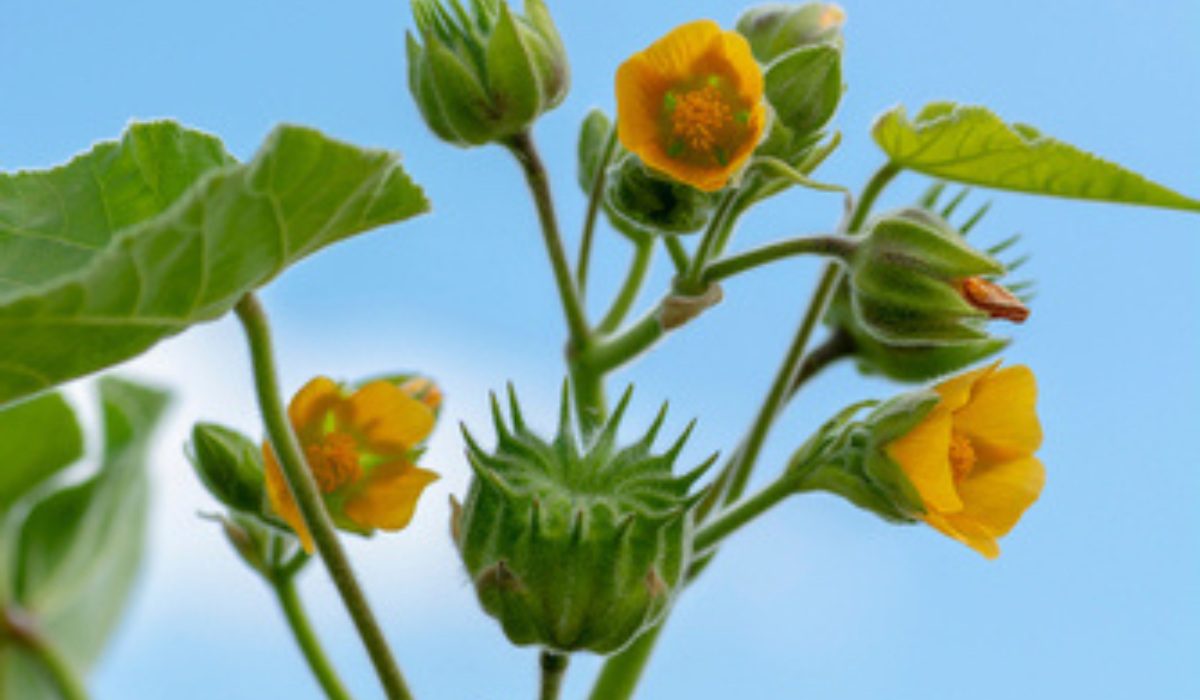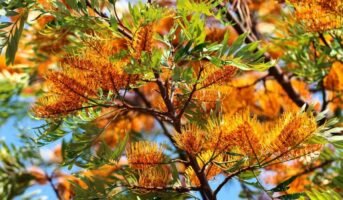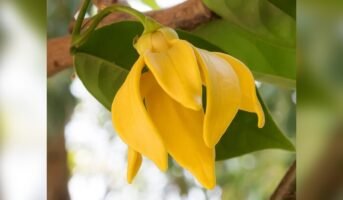Abutilon theophrasti is a member of the family Malvaceae. Its common names are velvetleaf, velvet plant, velvet weed, Chinese jute, and Indian mallow. Its natural habitat is southern Asia. The plant is named theophrasti in honour of the ancient Greek botanist and philosopher Theophrastus.
Velvetleaf may grow anywhere from three to eight feet tall on sturdy, branching stems. It features yellow blooms that may grow up to an inch in diameter and have five petals that are linked at the base.

Source: Pinterest
See also: Tips to grow and take care of anthurium
Abutilon theophrasti: Key facts
| Common name | Velvetleaf, velvet plant, velvet weed, Chinese jute, Indian mallow |
| Family | Malvaceae |
| Native Area | Mediterranean |
| Maintenance | Easy |
| Soil pH | 6-7 |
| Maximum Height | 10 ft |
Abutilon theophrasti: Features
- Their stalks are fluffy with downy hairs all over them. Warmer months of each year are optimal for its growth. It takes till summer for it to bloom after germinating in the spring.
- The leaves are huge and formed like a heart, and they come to a point at the very end. The leaves are linked to thick, long stalks, and when they are crushed, they exude an odour.
- They grow at different locations along the length of the stem or are alternated throughout the stem.
- The flowers are found growing on stalks, and along the point where the stalk joins the stem of the leaf, they can either be found in groups or singly.
- The plant produces pod-like capsules that are composed of 12–15 wood segments that create cup-like rings.
- These rings are formed by the plant. The segments continue to remain linked all the way through the maturity process of the seeds, and when the seeds are ready to be released, the outside of the capsule has vertical slits that open up and let the mature seeds fall out.
Abutilon theophrasti: Growing through propagation
Velvetleaf is most commonly found in areas of newly disturbed soil, which brings long-dormant seeds closer to the earth’s surface and allows for easier access. When the earth is warm enough, the seeds will sprout at any moment.
Cotyledons on seedlings can be either spherical or in the form of a heart. The initial genuine leaves have the form of a heart with borders that are serrated.
- Plant the seeds in a heated greenhouse at the beginning of April. In around two to three weeks, the seeds should germinate.
- Prick the seedlings out into individual pots as soon as they are large enough to be handled, and then plant them outside in May or June after the last forecast frosts have passed.
- Outdoor sowing at the location between the months of April and early May might also be attempted, particularly in regions that have warm summers.

Source: Pinterest
Abutilon theophrasti: Maintenance tips
- This plant thrives best in well-drained, rich loam or clay-loam soil in full sun.
- The amount of nitrogen available has a significant impact on the overall growth of the plant.
- The plant develops rapidly, producing leaves that are alternate, palmate, heart-shaped, and taper to a point, and have visible veins all along their surface.
- Both a taproot and a fibrous root system will develop from the plants as they grow. When crushed, the top sections of the plant emit a foul-smelling stench throughout the entirety of the plant.
- Flowers with an orange-yellow hue are produced in the middle of summer on short stalks that emerge from the axils of the uppermost leaves of the plant.
Abutilon theophrasti: Edible uses
After being dried and pounded into a powder, the ripe seed is subsequently utilised in dishes such as bread, soup, and others. It is first rinsed to eliminate any bitterness that may be present. The seed has a composition of around 17.4 percent protein, 16.6 percent fat, 33.8 percent carbohydrates, and 4.4 percent ash.
Abutilon theophrasti: Medicinal uses
- In traditional Chinese medicine, diarrhoea and urine incontinence are both treated using tea prepared from dried roots.
- Ulcers are treated using a poultice made of the leaves of the plant.
- The bark has properties that make it astringent and diuretic.
- In order to treat diarrhoea, stomachaches, and other similar conditions, the seed is ground into a powder and then consumed.
- It soothes the stomach while also being demulcent, diuretic, emollient, and laxative.

Source: Pinterest
FAQs
What is the other name of Abutilon theophrasti?
Abutilon theophrasti is known by its common name velvetleaf.
Are the seeds of Abutilon theophrasti useful?
Yes. In addition to being cooked and eaten, the seeds are mostly prized for the oil that can be extracted from them.
Housing News Desk is the news desk of leading online real estate portal, Housing.com. Housing News Desk focuses on a variety of topics such as real estate laws, taxes, current news, property trends, home loans, rentals, décor, green homes, home improvement, etc. The main objective of the news desk, is to cover the real estate sector from the perspective of providing information that is useful to the end-user.
Facebook: https://www.facebook.com/housing.com/
Twitter: https://twitter.com/Housing
Email: [email protected]











